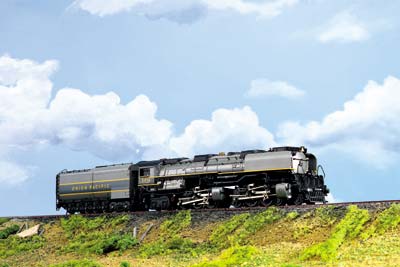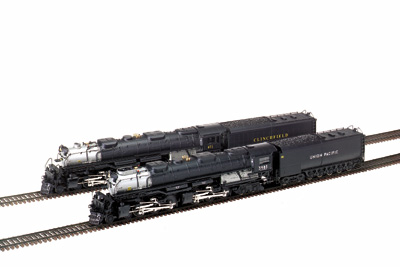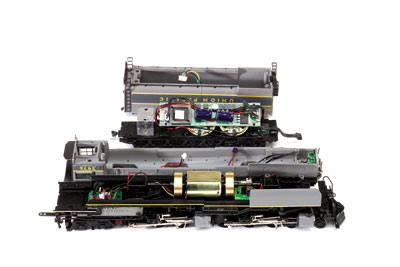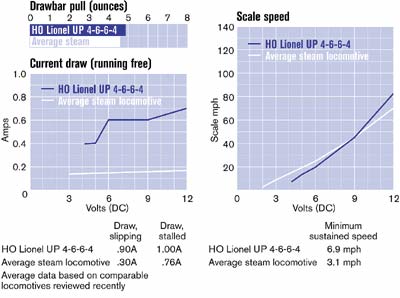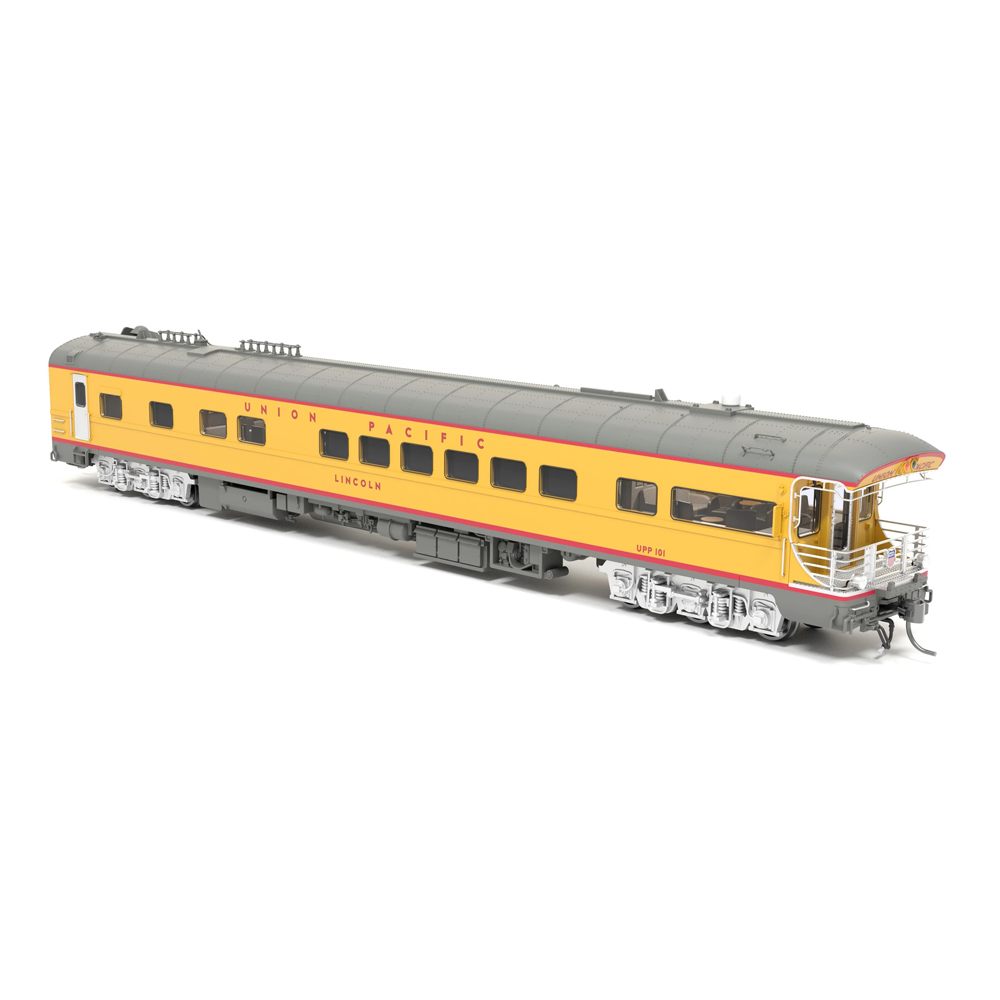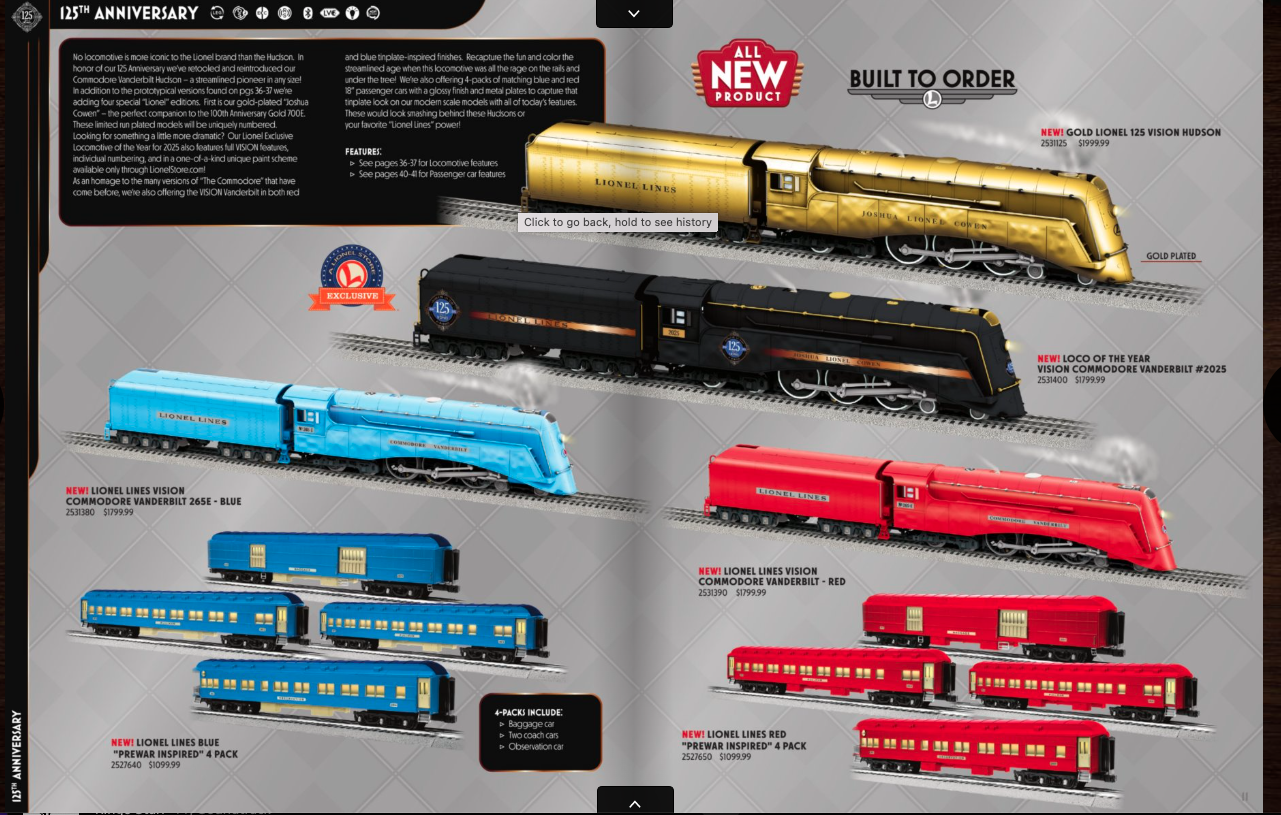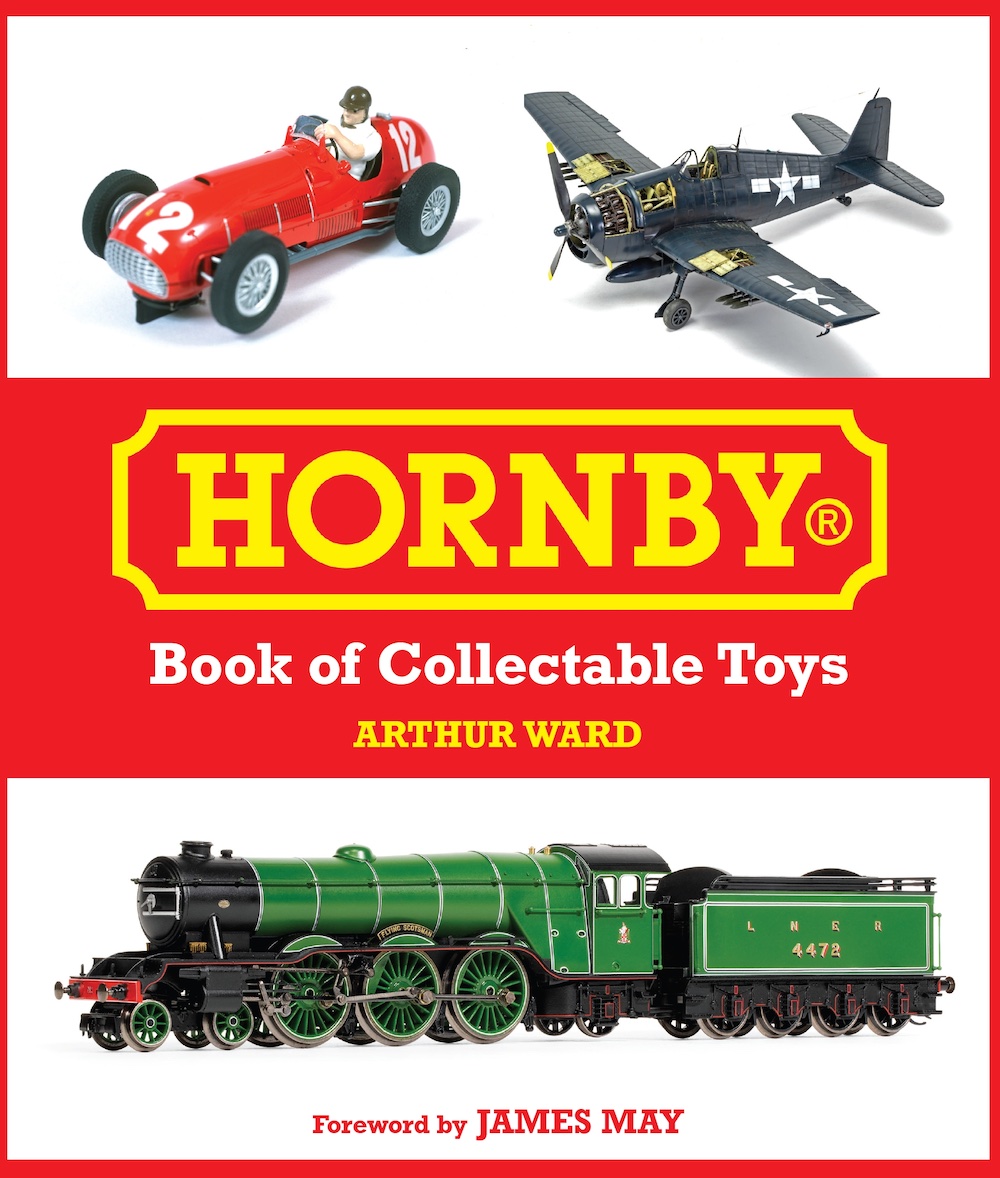“Challenger” is one of the more dramatic names given to any steam locomotive wheel arrangement, and the new HO scale 4-6-6-4 from Lionel lives up to that moniker. It’s a well-executed model of a well-known group of locomotives, made more famous because one of them still steams. It’s big, handsome, and loud, with built-in controllable sound effects in both conventional DC and Digital Command Control (DCC) operation.
For its return to HO scale Lionel chose an outstanding prototype – the last new steam locomotive design built for the Union Pacific. Sixty-five of these versatile simple articulateds were constructed by the American Locomotive Co., Alco, between 1942 and 1943. (Six more of the same design were built for wartime service on the Denver & Rio Grande Western in 1943. After the war they were sold to the Clinchfield RR.)
While meant primarily for fast freight service, the UP Challengers routinely drew passenger assignments as well. Originally concentrated on the Wyoming Division main line between Laramie and Green River, they eventually spread across the UP system. When newer forms of motive power restricted their over-the-road assignments, the 4-6-6-4s proved to be good helper engines on the Wasatch grade east from Ogden, Utah.
The Challengers’ era ended in 1959, though that proved a temporary end in the case of one engine. Between 1979 and 1981, a volunteer group of UP employees magnificently restored the 3985, which had been “stuffed and mounted” in a North Platte park. She’s still in UP service today and owns the title of the largest operating steam locomotive in the world.
Lionel’s Korean-made model is an accurate, well-proportioned representation of these notable locomotives. Most of the model’s measurements are within an inch or so of the prototype dimensions. The greatest discrepancy is the driving wheel diameter, a scale 66″ instead of the authentic 69″. In terms of the HO locomotive’s overall appearance, this doesn’t seem to matter very much.
More of a drawback is the locomotive’s articulation, with both “engines” or driver sets pivoted like swiveling trucks. On real articulateds the boiler and firebox are mounted rigidly on the rear engine, and the front engine is hinged from its rear end. Besides giving the model an unrealistic motion through curves and turnouts, this compromise allows you to see daylight under the boiler where it should rest on the saddle of the rear cylinders, and under the large pipes that are supposed to be supplying the rear cylinders with steam. The extra flexibility lets the model operate on 18″-radius curves, but it’s too big an engine to look good on such tight turns – the manufacturer recommends a minimum radius of 22″.
Features
Like a traditional Lionel O gauge steam locomotive, the Challenger is mostly die-cast metal, though it also sports many individually added details of formed wire, etched metal, and molded plastic. The detailing is very complete, even to the non-operating clamshell smoke hood inside the shroud around the dual smokestacks. The model features illuminated number boards and a cab light that helps to show off the backhead detail. The cab windows slide open too.
Coal-burning versions of the model have appropriate ash-pan doors along the sides of the firebox. Oil burners correctly have fire-pan details instead.
The RP-25 contour metal wheels match the National Model Railroad Association’s standards gauge. The model picks up current from all 12 drivers and from two wheels on each side of the tender.
The tender has a Kadee Magne-Matic coupler mounted at the correct height, while the pilot door can be removed allowing one of two plastic dummy knuckle couplers to be snapped in place. The shorter of these is just for looks, but the longer one allows double-heading.
Sound and control are the most compelling features of this model. The QSI Quantum sound system has synchronized exhaust sounds, of course, with out-of-step chuffs for each engine. Also included are a deep-toned “steamboat” whistle, a digitally recorded bell, and several auxiliary sounds. These can be programmed in both the DC (“analog”) and DCC modes.
The programming is much easier for DCC users, as all the DC programming and sound operation has to be controlled by polarity switching with a reversing switch. The system includes verbal cues – it talks back to you! – that are a big help with these procedures. Sound quality is good, with two full-diameter round speakers mounted over enclosures built into the tender floor. However, all the sounds came set at maximum volume, and they don’t all sound their best that way. The whistle suffers from distortion as delivered but sounds more realistic at a lower setting. There’s a volume control under the tender’s rear water hatch; however, for best effect it’s worth taking the time to program the individual sound volumes.
Performance
The DCC part of the Quantum system functions as a true dual-mode decoder and automatically recognizes whether the engine is picking up conventional DC or DCC signals from the rails.
As delivered, the DC starting voltage is very high, almost 9 volts, and the performance graph (above) was made with the starting voltage, “V-start,” reprogrammed to 3.7 volts. This made for a more normal throttle range but required care in stopping the engine without dropping below the minimum voltage needed to keep the sound turned on, just under 3.5 volts. Once you get used to the sound effects, you won’t want them shutting down and starting up all the time as continuous sound is the goal.
In DCC operation the engine has a much better feel. The sound is continuous as long as the current isn’t interrupted, and the sound effects can be controlled with function keys independent of the speed and direction. The usual configuration variables can be programmed to tailor the engine’s operation and sound effects.
Paint variations
Lionel is offering this 4-6-6-4 painted and lettered six different ways. The black-and-graphite coal versions are “standard” UP Challengers. The black oil burners with 3700-series numbers represent engines renumbered in 1952 to differentiate them from coal burners.
Two versions of the two-tone gray scheme were used on Challengers assigned to Pacific Northwest passenger service. The yellow striping and lettering is appropriate for 1946 to 1949. A June 2, 1949, revision changed the striping and lettering color on gray steam locomotives to silver gray. This lasted until the engines began to be repainted black in 1953.
Lionel is also making D&RGW World War II-era Challengers, and the same engines as used on the Clinchfield RR after being modified with single smokestacks.
All the lettering and striping is neatly applied, and even the smallest stencilling on the cab sides and air reservoirs is crisp and legible.
The Lionel Challengers are top-quality, well-constructed models. They are great reasons to welcome this maker’s return to HO scale.
Price: $699.99
Manufacturer:
Lionel LLC
50625 Richard W. Boulevard
Chesterfield, MI 48051-2493
588-949-4100
www.lionel.com
Description:
Die-cast metal ready-to-run steam locomotive and tender
Features:
Directional headlights
Drawbar pull: 4.8 ounces(72 free-rolling freight cars on straight, level track)
Engine weight: 31 ounces,(49 ounces with tender)
Flat can motor with two flywheels
Illuminated number boards and cab interior light
Kadee Magne-Matic coupler on tender only (optional dummy front couplers)
Minimum radius: 18″ (22″ recommended by manufacturer)
QSI Quantum dual-mode (DC and DCC) control and sound system
RP-25 contour wheelsets, all correctly gauged
Sliding cab side windows
Smoke generator mount for twin or single stacks, with prewired terminal on printed-circuit board
Twelve-wheel drive with 16-wheel electrical pickup
Twin speakers in tender
Paint schemes (2 numbers each):
Clinchfield RR
Denver& Rio Grande Western
Union Pacific black and graphite with 3900-series numbers
UP black and graphite oil burner with 3700-series numbers
UP two-tone gray with yellow lettering and striping
UP two-tone gray with silver-gray lettering and striping





